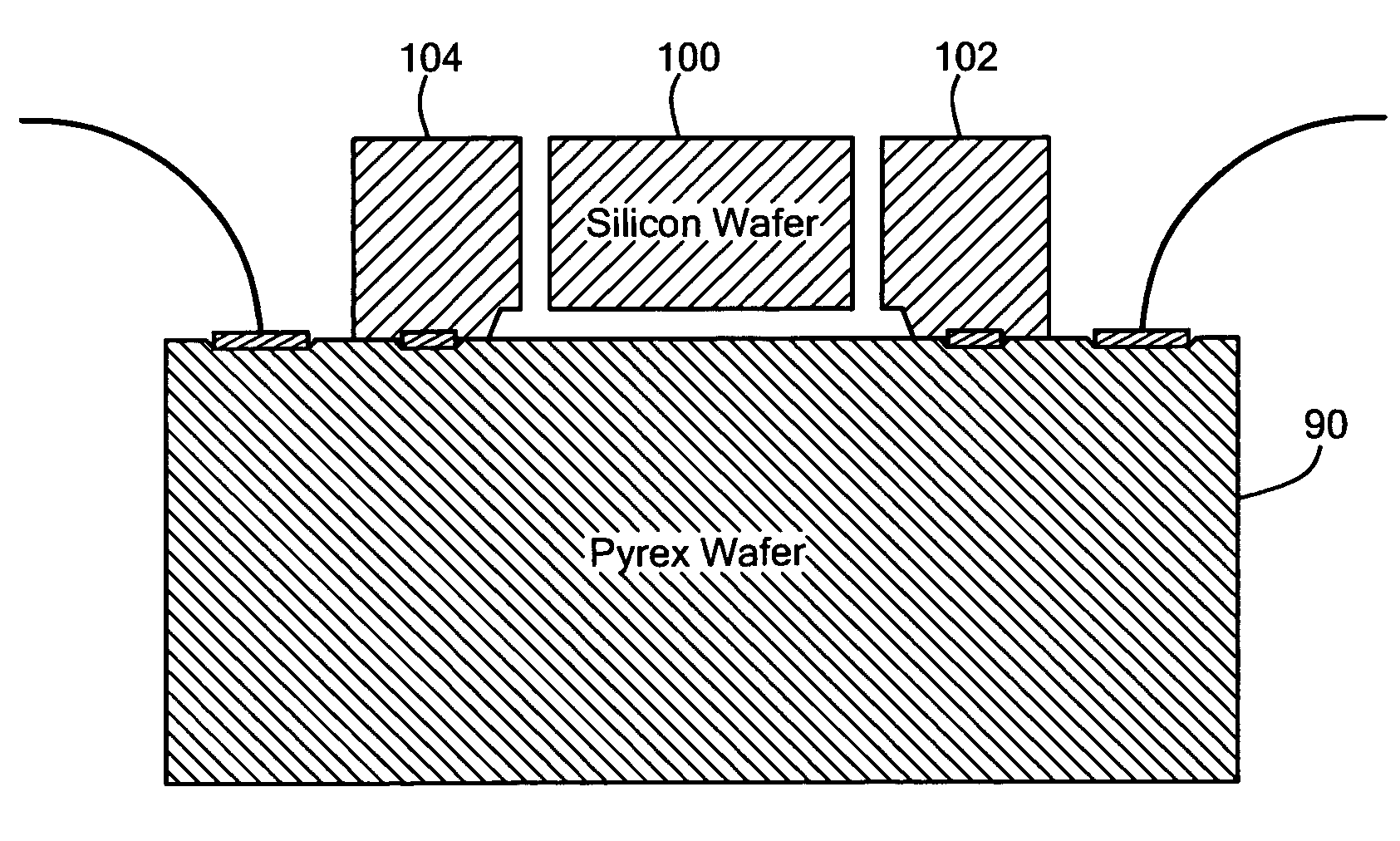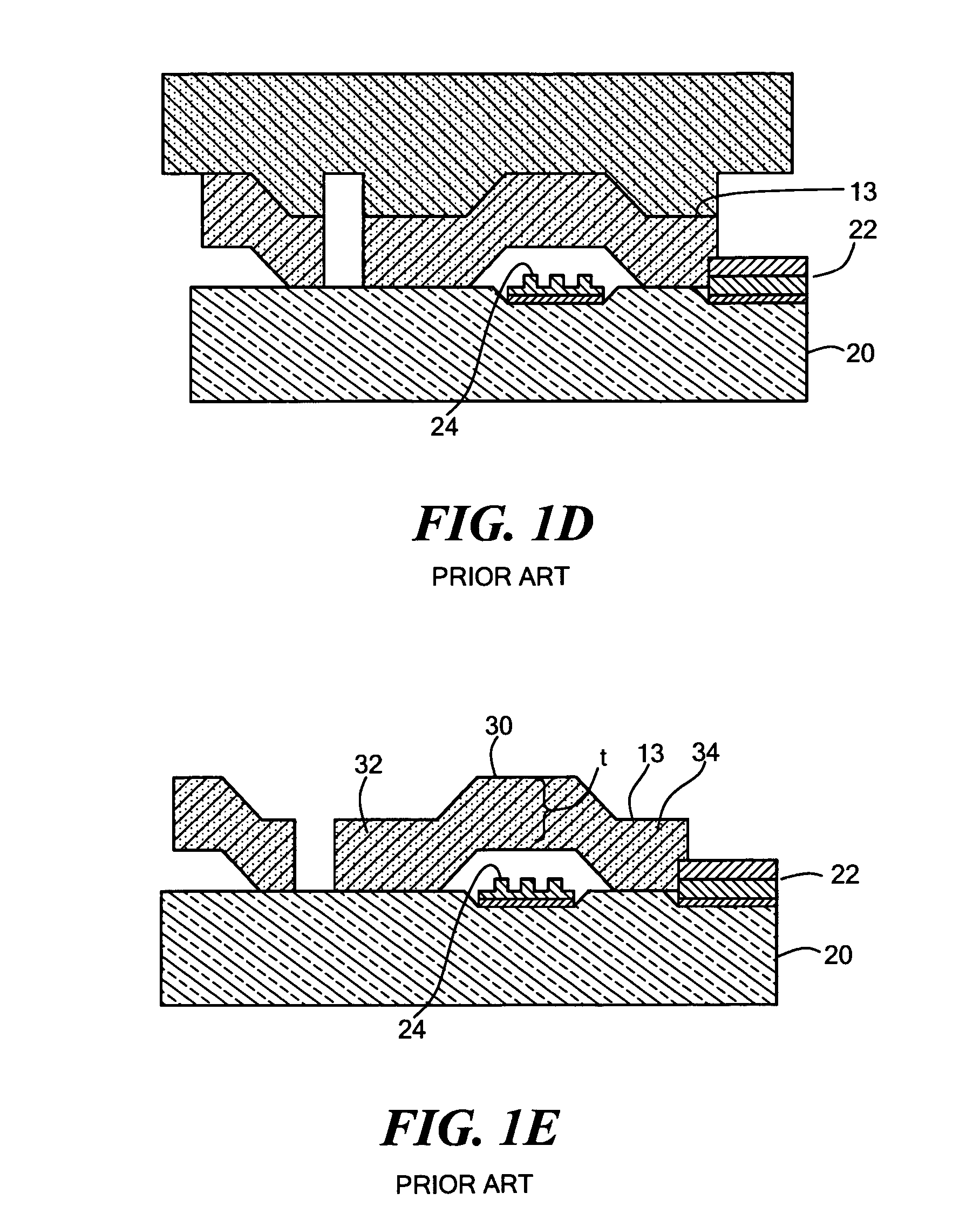Method for fabricating micro-mechanical devices
a micro-mechanical device and gyroscope technology, applied in the field of forming gyroscopes and accelerometers, can solve the problems of limiting the thickness of the resulting device, non-uniform stress gradient, structure bending, etc., and achieves thicker micro-mechanical structures, reduces stiction, and eliminates or minimizes the need for highly corrosive wet chemical etches
- Summary
- Abstract
- Description
- Claims
- Application Information
AI Technical Summary
Benefits of technology
Problems solved by technology
Method used
Image
Examples
Embodiment Construction
[0031]Aside from the preferred embodiment or embodiments disclosed below, this invention is capable of other embodiments and of being practiced or being carried out in various ways. Thus, it is to be understood that the invention is not limited in its application to the details of construction and the arrangements of components set forth in the following description or illustrated in the drawings. If only one embodiment is described herein, the claims hereof are not to be limited to that embodiment. Moreover, the claims hereof are not to be read restrictively unless there is clear and convincing evidence manifesting a certain exclusion, restriction, or disclaimer.
[0032]As discussed briefly in the background section above, commonly owned U.S. Pat. No. 5,492,596 discloses a method of fabricating a gyroscope or other MEMS device when silicon wafer 10, FIG. 1A is etched to form recess or mesa 12. In FIG. 1A, structure below mesa 12 will be the device structure suspended above another, t...
PUM
 Login to View More
Login to View More Abstract
Description
Claims
Application Information
 Login to View More
Login to View More - R&D
- Intellectual Property
- Life Sciences
- Materials
- Tech Scout
- Unparalleled Data Quality
- Higher Quality Content
- 60% Fewer Hallucinations
Browse by: Latest US Patents, China's latest patents, Technical Efficacy Thesaurus, Application Domain, Technology Topic, Popular Technical Reports.
© 2025 PatSnap. All rights reserved.Legal|Privacy policy|Modern Slavery Act Transparency Statement|Sitemap|About US| Contact US: help@patsnap.com



